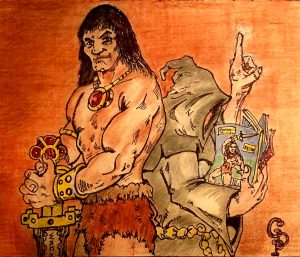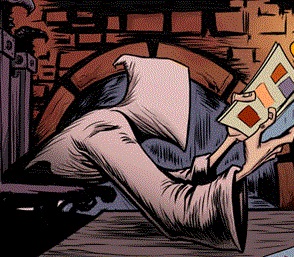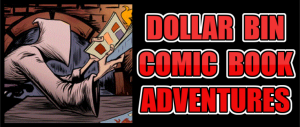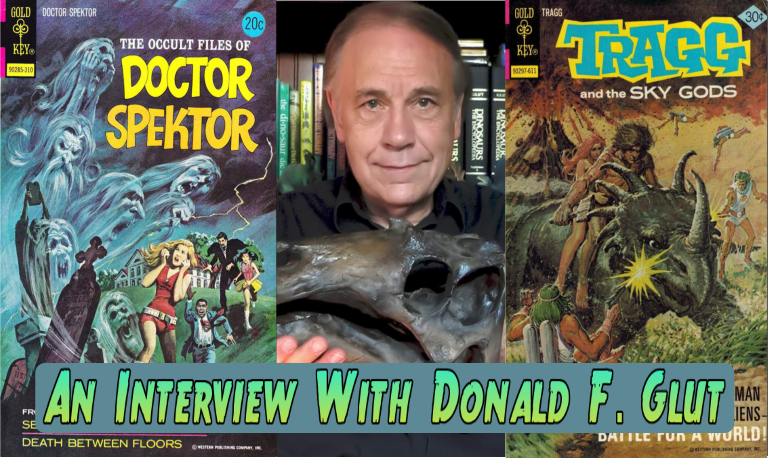
“If you remember the days of Gold Key Comics, Donald Glut is a name you should know. He created The Occult Files of Doctor Spektor, Dagar the Invincible, and Tragg and the Sky Gods. He’s also a successful filmmaker, amateur paleontologist, and novel writer. His time at Marvel and DC Comics included writing in DC horror anthologies and writing fan favorites like The Invaders, Captain America and Ghost Rider. You can read some of Don’s most recent work in the pages of The Creeps, a horror anthology in the spirit of Warren’s Creepy and Eerie magazines, to which he regularly contributes.”
By WALLY MONK – Paint Monk’s Library Editor
Donald F. Glut is a man of many faces and equally as many talents. He’s a successful motion picture director, writer, comic book creator and pop culture entrepreneur. If you’re a fan of dinosaurs, he’s got plenty of books and independent films to his credit in the prehistoric genre.
If you love swords and sorcery, Don was the creator of Dagar the Invincible, Tragg and the Sky Gods and the horror series The Occult Files of Doctor Spektor for Gold Key Comics. He’s written episodes of my favorite childhood show – Land of the Lost (and many others) – and he wrote stories for Marvel’s Savage Sword of Conan featuring Solomon Kane and Kull the Destroyer. Don received the coveted Inkpot Award in 1980 from Comic-Con International and he’s also well-known for his novelization of the 1980 Star Wars film The Empire Strikes Back.
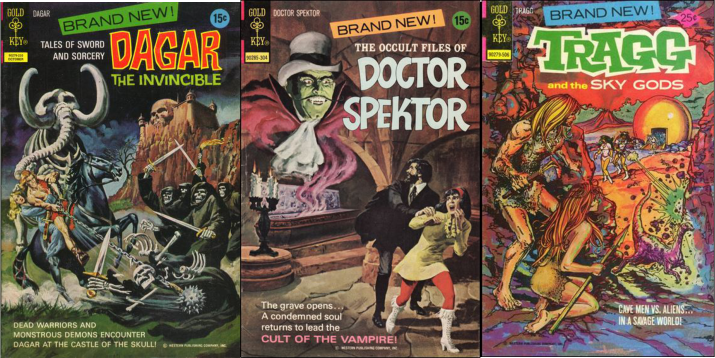
Truth be told, his resume is so comprehensive that I could fill dozens of posts with the work he’s done in the film, comic book and writing industries.
Don agreed to an email interview with Paint Monk’s Library about his time with Gold Key Comics on Tragg and the Sky Gods, Dagar the Invincible and Doctor Spektor with a few questions about his time on Savage Sword of Conan and his storied movie career mixed in.
(In all fairness to Don – whose work I respect tremendously – I have been working on formatting and editing this interview for some time. It was completed in early 2019 – but I didn’t have the time to add sidebars, do my due diligence, and properly format it until now. Thank you, Don, for your immense amount of patience.)
WALLY MONK
So all of my interviews start back at the beginning. With so hefty a resume, much of your work seems to entail dinosaurs, the horror genre, swords and sorcery, and science fiction. When did you enter into this world of fantasy and creativity, and how old were you?
DON GLUT
“When I was a very young kid, say prior to about six years old, I was mostly into trains and cowboys. Of course, like all kids in the late 1940s, I loved Disney movies, cartoons in general, fairy tales, etc. And I always had an affection for the Superman character. My first awareness of dinosaurs began when I was about four or five years old and my mom took me to the Chicago Natural History Museum (now called the Field Museum) and I saw my first fossil skeletons. My interest in science fiction began when at a Cub Scout den meeting I saw something on TV that totally captured my imagination. It was a chapter of the first Flash Gordon movie serial. Instantly I was hooked!
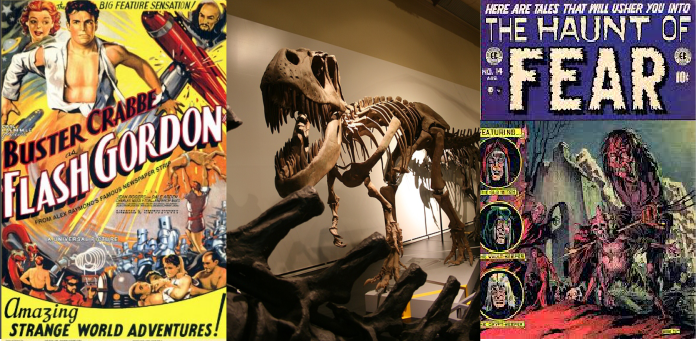
As to monsters and horror, my first significant exposure to those were the movies I saw on TV and in theatres, especially the old Universal Frankenstein, Dracula and Wolf Man pictures; and also the pre-Code horror comic books, mostly the ECs and Dick Briefer’s Frankenstein.
I’ve never particularly liked sword and sorcery, even though over the years I would write a lot of it. Of course, I’d seen movies that were almost in that vein, like the Italian Hercules and Maciste films, but I think my first exposure to actual S&S, as we usually define it, were some of the stories about Dax the Warrior appearing in the Warren horror comic magazines. But as I said, that genre never much appealed to me.”
WALLY MONK
You are heavily into film making and are credited with over 40 films during your younger years and time as what the ‘zines call an “amateur filmmaker”. Many of these films were based on comic book characters. Did you foresee the jump into comic book writing, was that the eventual goal, or just an extension of what you were doing in your films? And did any of your ideas for films ever get incorporated into your comic book writing?
DON GLUT
“I made 41 of those amateur movies, starting what would become my main hobby at the age of nine, and to date eight professional feature-length films, most recently Dances with Werewolves and Tales of Frankenstein through my company Pecosborn Productions. And yes, a good number of the featured comic book characters, including Superman, Spider-Man, Captain America, The Shadow and The Spirit. No, I never – at least back then – thought of those movies as leading to anything, like comic book writing or making professional films.
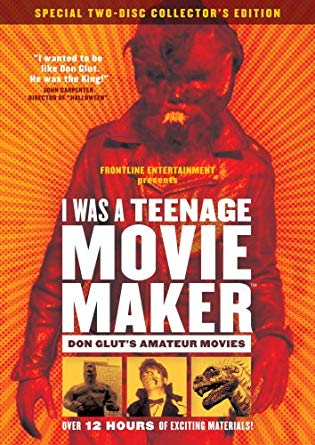
That was, after all, Chicago, where most people, at least the ones I have known over many years, tended to regard such things as writing, art, music, acting etc. as hobbies rather than professions. I initially started making those films not because I wanted to be a film-maker, but because I wanted to show monster etc. films anytime I wanted to on our home screen. Those were days long before you could own movies – legally anyway – at least, the kinds I wanted to see (dinosaurs, monsters, and superheroes). There were no home video players and companies like Castle Films didn’t yet include such genre material in their catalogs.
The only “occupation” I really yearned for back in those days was to be a rock star (honestly!) which seemed like a pipe dream and almost did become a reality in the late 1960s (Google Penny Arkade and Mike Nesmith). All I really knew back then was that I didn’t want to work in a “regular job”. Luckily, I was fairly adept at various creative activities – e.g. writing, art, music, acting and other things – which explains why there are so many seemingly unrelated credits on my resume.
As to my home movie ideas getting incorporated in my later comic book writing, it was really the other way around. I wanted to put some of the ideas I’d read and seen in comic books – and also in Universal and Hammer horror movies, Republic movie serials and so forth, up on my screen. It wasn’t until the 1990s, after writing novels, non-fiction books, music, TV shows and a lot of magazine articles, that I got to write and direct my first movie, which was Dinosaur Valley Girls. ”
WALLY MONK
As you know, Paint Monk’s Library focuses on science fiction, horror, and fantasy, with a special emphasis on Conan the Barbarian and Robert E. Howard’s work. How much of your Dagar the Invincible was inspired by the work of Howard, or was this your own variation on the “barbarian” genre? Can you share how you envisioned Dagar as a different barbarian, or what separates him from the rest of the fictional warriors on comic stands at the time?
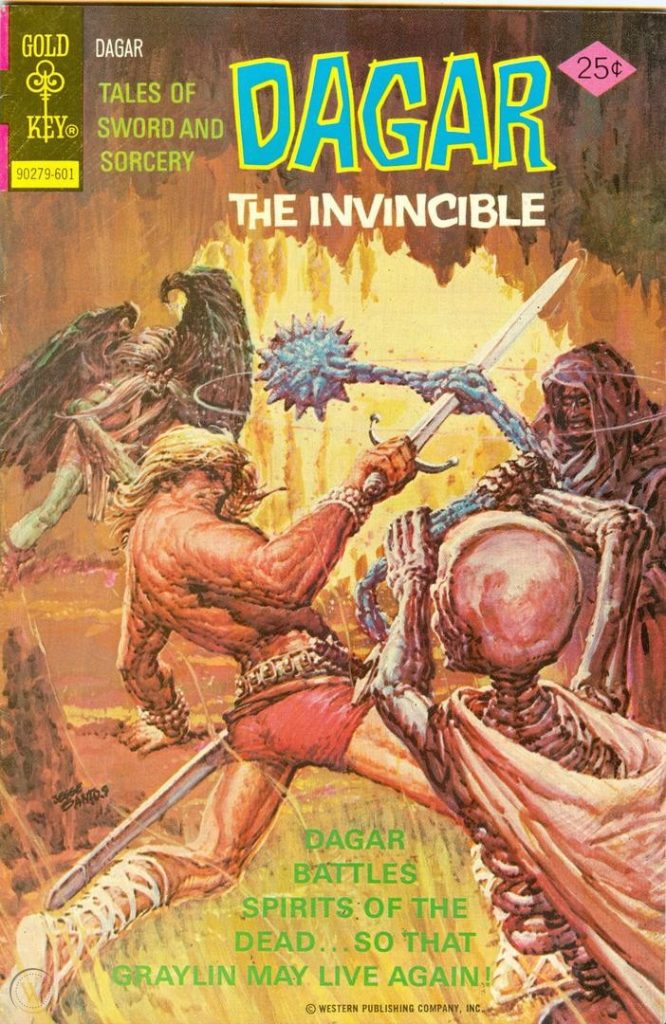
DON GLUT
“When I created Dagar, I’d never read a Conan story or anything by Howard, except maybe one or two of his horror short stories. My only experience with Conan was the Marvel comic book. That was the first time I’d ever heard of the character. The only Conan I knew was the middle name of the author of the Sherlock Holmes stories.
Yes, I definitely wanted Dagar to be different from Conan and all the Conan clones that followed in comics. Most importantly, Dagar was not a barbarian, a fact that gets stated more than once in my stories. He was a civilized guy, the last of his countrymen – an origin similar to that depicted subsequently in the movie Conan the Barbarian. Dagar had blonde hair, as opposed to the black hair sported by Conan and most of his comics imitators. And his horse had a name (Kasa), as did those of my old cowboy heroes like Roy Rogers and Hopalong Cassidy. Another way the Dagar book differed from the Conan (and Kull) comic books is that it used sound effects and gave the characters thought balloons.”
WALLY MONK
Tragg and the Sky Gods, one of my personal favorite comics, was a nice mixture of science fiction and prehistoric times. What was your inspiration for Tragg, and can you tell us how you envisioned the series shaking out? There is a link to Dagar the Invincible from this series – did you envision the two to one day be entwined in some major storyline?
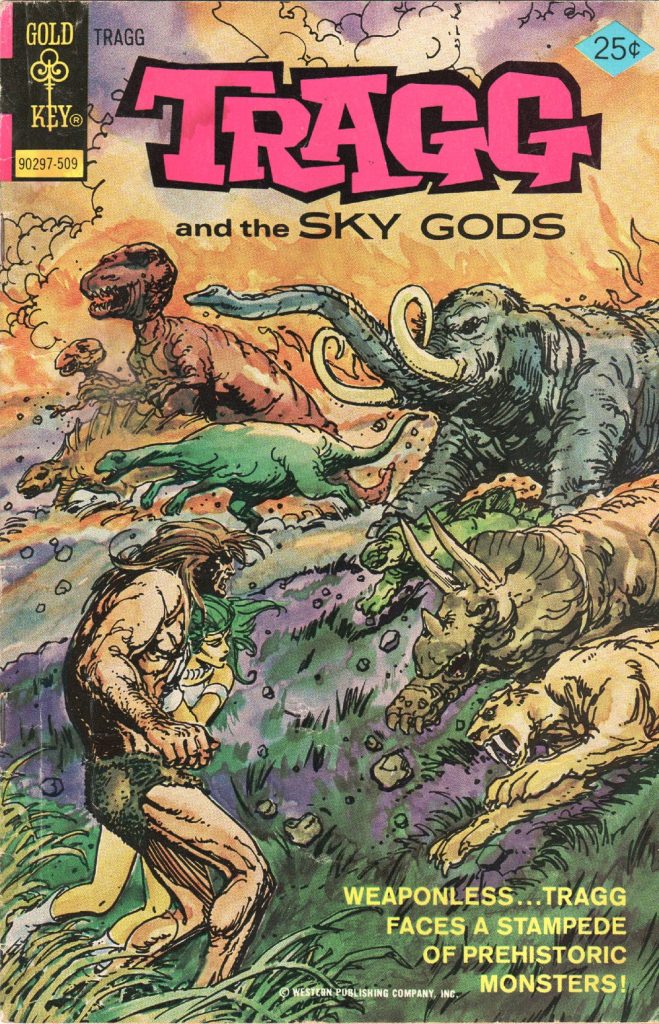
DON GLUT
“Tragg was directly inspired by Joe Kubert’s Tor, which had a tremendous impact and influence on me as both a kid reader and also as a later professional writer and amateur paleontologist. In fact, Tor was one of the primary influences on my lasting interest in things prehistoric, which would lead eventually to a serious study and the writing of semi-technical books.
I really wanted to do Tragg as a straight Tor-type caveman-dinosaur book. But Gold Key already had Turok, Son of Stone, and dinosaurs also appeared frequently in the company’s Tarzan books, which may be the reason my original concept got shot down. Erich von Daniken’s Chariots of the Gods and its follow-ups were hot topics back then and Gold Key wanted to capitalize on the phenomenon. So they asked me to come up with a series about the so-called ancient astronauts.
I saw that as an opportunity to get my Tragg title, at least in a compromised way. When they okayed my request to set the series in prehistoric times, they also let me bring in Tragg (who’d already appeared in two Mystery Comics Digest short stories) as its hero. When I started the Tragg book, I don’t recall his being related to Dagar and Dr. Spektor.
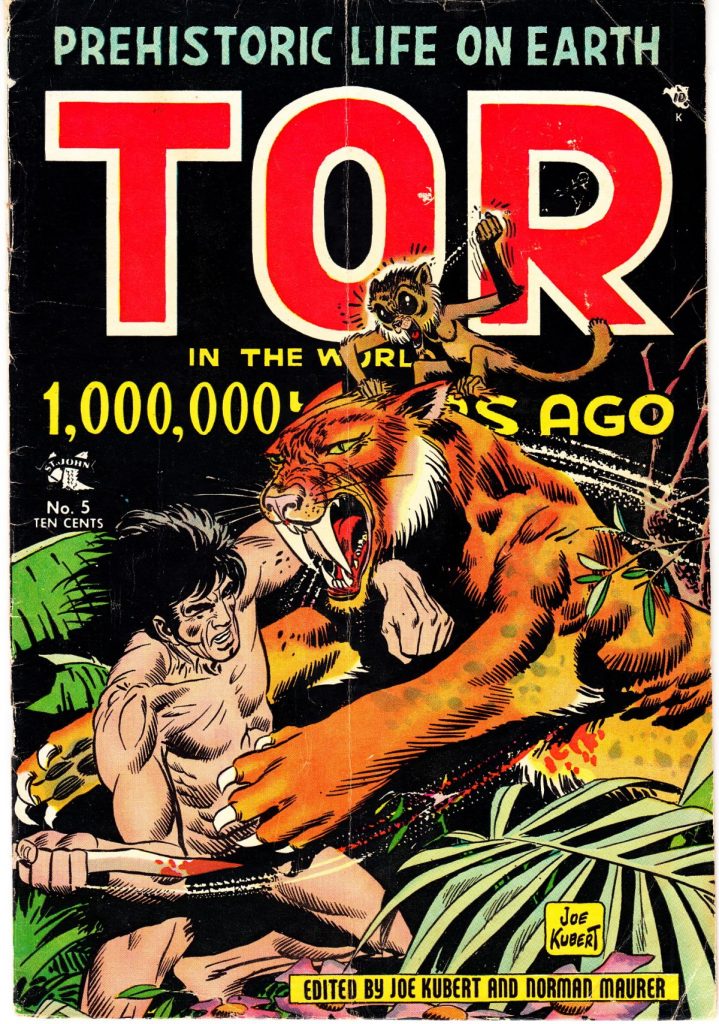
I think that idea came later after all three books were going full steam. I’m really surprised the editors approved those relationships. They hated continuity, convinced as they were that nobody would ever read even two consecutive issues of a single series, nor were they fond of crossovers. Miraculously, I was able to carry that idea over all three titles – Tragg, Dagar and Spektor.”
WALLY MONK
Tragg gave you a great opportunity to mix dinosaurs with science fiction and primitive man. With the science fiction connection, did you have any plans to have Tragg literally in a pure “science fiction” setting, ala cross-over comics? And what do you think of some people claiming that Tragg inspired Marv Wolfman’s Skull the Slayer at Marvel Comics?
DON GLUT
“I never heard that Tragg inspired my good friend Marv’s Skull the Slayer. Given the poor distribution of the Gold Key books, especially on the East Coast, I wonder if Marv was even aware of my book. But comic books featuring prehistoric creatures were very popular during the 1970s, which also saw DC bringing back Tor for a while. I’d say that Marv, a very creative guy, was just following this trend and his own instincts. As to a pure SF setting, no, Tragg was always meant to live only in his regular prehistoric environment.”
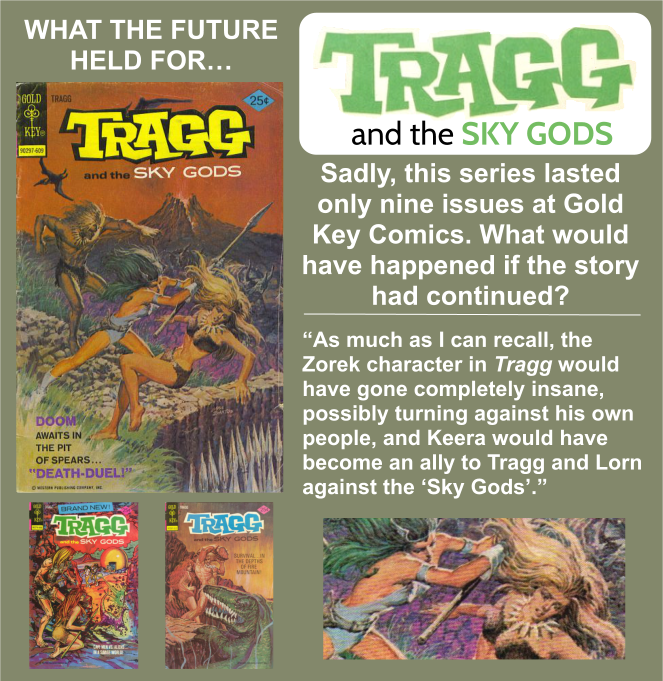
WALLY MONK
Are there any comics in your favorite genres from the 1970s and 1980s that you would have enjoyed writing but did not have or take the opportunity, and what are they?
DON GLUT
“I really wanted to write a Frankenstein series. When Roy Thomas gave Marvel’s Monster of Frankenstein to Doug Moench – both of whom were and remain good and long-time friends – it was heart-breaking. I would have liked to do more What If, Captain America and The Invaders, books I really enjoyed writing. But that wasn’t in the cards. I think I could have had fun with Ka-Zar too.
Also, I once pitched an idea to Roy about doing a team-up book I called The Golden Girls, featuring some of Marvel’s Golden Age distaff heroes like Golden Girl, Venus, Namora and Blonde Phantom, but he wasn’t interested.”

WALLY MONK
For those of us who loved your three series with Gold Key, can you share with us a little tidbit of how you would have wrapped up Tragg and Dagar had the series run their course? We’ll call it a Paint Monk’s Library exclusive!
DON GLUT
“I’d already written some future plot ideas for those books, plus a full Spektor origin script, which Gold Key bought and new editor Bill Spicer edited – shortly before the books got abruptly and surprisingly canceled. As much as I can recall, the Zorek character in Tragg would have gone completely insane, possibly turning against his own people, and Keera would have become an ally to Tragg and Lorn against the “Sky Gods”. I don’t remember any plans to bring Graylin back in Dagar. But I certainly had plans for Lakota to return to Dr.Spektor, after being a prisoner of the Dark Gods. I also planned to have Spektor head a team of former heroes including the Owl, Man of the Atom, Purple Zombie, Simbar and maybe others to combat the Dark Gods. When Dark Horse reprinted the Spektor books in hardcover, I wanted to do a graphic novel, reinstating the 1970s status quo, after which a new writer may want to take it over as a regular series.”
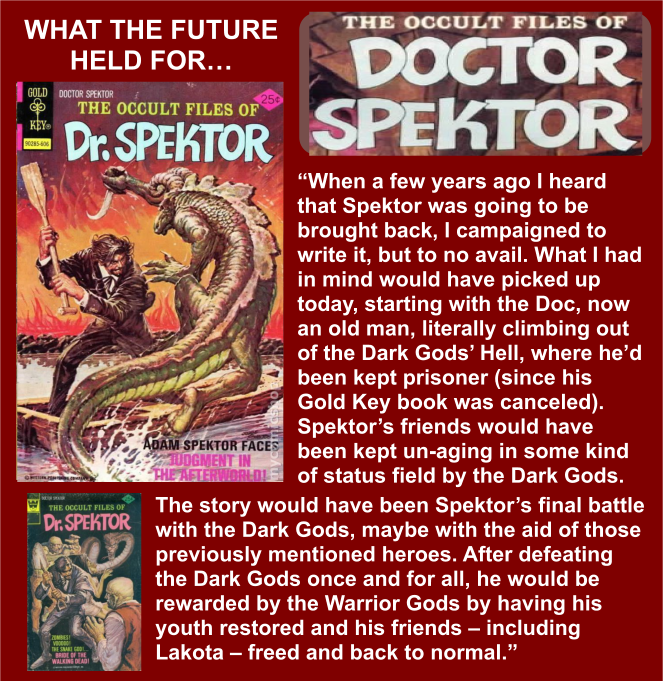
WALLY MONK
As one of many talented writers who had their time with the Savage Sword of Conan, what was your spin on the Cimmerian? What were your ideas for expanding the Conan mythos through your writing?
DON GLUT
“My only involvement with Conan was writing a plot for one of the Thomas-scripted annuals. As already stated, I wasn’t a fan of sword and sorcery per se so I never thought much about the character. Even if I had, Conan was strictly “Rascally” Roy’s baby back then.”
WALLY MONK
You wrote stories of Kull and Solomon Kane during your time writing for Marvel. Which Robert E. Howard character was your favorite, and why? Which do you feel gave you the most opportunity to “flesh out” or be creative?
DON GLUT
“I never enjoyed writing Solomon Kane, didn’t like the character. I wrote those stories because Roy gave me the gig, they were fairly easy to write and they paid well. I managed to do quite a lot of stories featuring the Puritan, many of which were adaptations of Howard’s prose originals, meaning I didn’t have to come up with original plots.

Inventing a plot is, with me, more difficult than the actual writing. I did have fun with the Dracula and Frankenstein Castle crossover stories, because they involved other subjects that interested me.
As for Kull, I had to make that book different from Dagar, which I was writing at the same time. But in a sense, Kull was for me what I wanted to do with Dagar, but Gold Key company policy wouldn’t let me do. I even did a secret crossover between the two books, which I assume not many people (certainly not my editors at Gold Key) ever caught!”
WALLY MONK
If an independent company were to approach you about revisiting Tragg or Dagar, would you be open to the possibilities? I think there are many of us that would love to see these characters brought back for a new story. If not, have you ever considered crowdfunding a new effort, through perhaps Kickstarter or Indiegogo?
DON GLUT
“If you could clear the rights and the money was good, I would probably write at least a few new stories. But I’d rather write Tragg, which I enjoyed more than Dagar.
I would write Dr. Spektor in a heartbeat. When a few years ago I heard that Spektor was going to be brought back, I campaigned to write it, but to no avail. What I had in mind would have picked up today, starting with the Doc, now an old man, literally climbing out of the Dark Gods’ Hell, where he’d been kept prisoner (since his Gold Key book was canceled).

Spektor’s friends would have been kept un-aging in some kind of status field by the Dark Gods. The story would have been Spektor’s final battle with the Dark Gods, maybe with the aid of those previously mentioned heroes. After defeating the Dark Gods once and for all, he would be rewarded by the Warrior Gods by having his youth restored and his friends – including Lakota – freed and back to normal. So a new series would begin picking up from where we left off in the late 1970s – business as usual.
But the Powers-that-Be weren’t interested. I never read the rebooted version, which didn’t catch on.
As to Kickstarter and Indiegogo, I’ve already launched a number of crowdfunding campaigns for my movies and also a Tales of Frankenstein collectors calendar, all of which bombed. Despite heavy promotion by me, they brought in tons of likes, shares and smiley faces on Facebook, but very little money. I couldn’t even get people just to put in a dollar, which I figured anyone could afford. They all proved to be just colossal wastes of time for me.”
WALLY MONK
The comics industry has changed quite a bit. Modern comics tend to focus on storylines that can be adapted to graphic novel format and tales which could be told in a single issue often span five or more comics. What do you think of the contemporary comics industry, and is it making progress and moving forward, or is something missing?
DON GLUT
“I have no comment because I haven’t read comic books since about the mid-1990s. I have no idea what’s happening with any of the old characters ore what is brand new. And I fondly remember complete stories that could be told in five to seven pages. Remember those back-up features in Action, Adventure and World’s Finest? But I’m back to writing comics scripts again. I’m a regular writer for Rich Sala’s magazine The Creeps, writing basically the same kind of horror stories – only better – that I wrote decades ago for the Warren magazines (Creepy, Eerie and Vampirella), which were my first professional comics-script sales.

So in a way, as far as writing comics is concerned, I’ve sort of come full circle. So far I’ve written close to 100 stories for The Creeps, most of which have been stockpiled for future issues, and have had a lot of enjoyment doing so. I also recently wrote graphic novel called Tales of Frankenstein, adapted from my recent motion picture of the same title. The book features great interior art by Mike Vosburg, Nik Powliko, Brian Postman, Craig Wilson, Russ Rainbolt and Jim Craig, and the cover is a painting by Christopher Shy; and the introduction was written by legendary Jim Steranko. I’m happy and quite proud of the way this is turning out. The graphic novel should be out (soon) from Bill Cunningham’s Pulp 2.0 Press.”
WALLY MONK
Growing up, who were your early influences in the comic industry, and who were your role models while developing your own writing style? What would you say to a young, teenage aspiring comic book writer or filmmaker? What advice would you give them to pursue their dream of being a pop-culture guru like yourself?
DON GLUT
“My earliest role models and influences as to writing comic book stories, in no particular order, were Stan Lee (Marvel), Al Feldstein (EC horror and crime), Joe Kubert (Tor) and Dick Briefer (Frankenstein). After getting firmly into the business as a professional, I continued to learn a lot about writing comics from Russ Manning, also Roy Thomas and my main Gold Key editor, Del Connell.
As to advice in regards pursuing any dream like writing or drawing, etc., think of it as a day job rather than a hobby; keep working at (and improving) your craft; let rejection roll off your back and don’t take it personally; network wherever and whenever the opportunity comes your way (it’s not so much what or who you know, as much as who knows you); and, perhaps most important of all, never give up!
Remember, if you have the talent, the drive and persistence, work like writing comic books can be your day job. It’s like playing and getting paid for it!”
WALLY MONK
Thank you to Mr. Glut for taking the time to answer these questions for our friends and fantasy aficionados.
DON GLUT
“And thank you, Wally. And please visit my websites www.donaldfglut.com and www.pecosborn.com.”
***
Do you remember the days of Gold Key Comics? Share your thoughts below with a one-click login through Facebook, Gmail or Twitter!

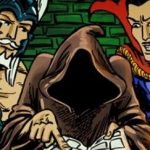
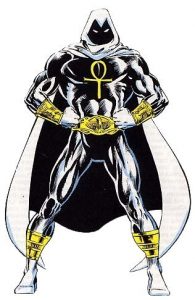

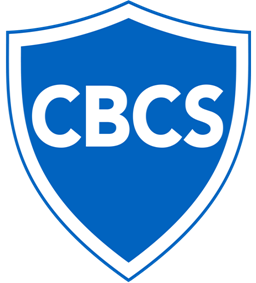
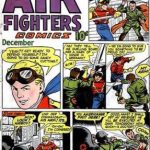
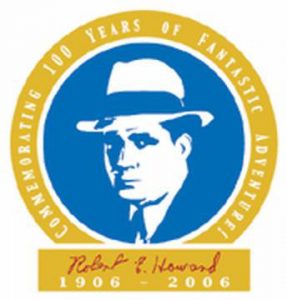
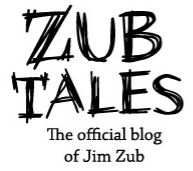
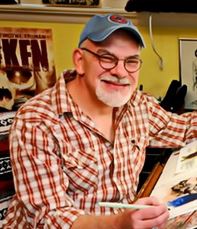
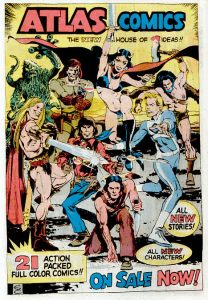
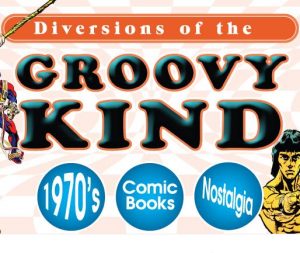
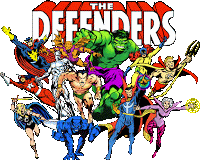
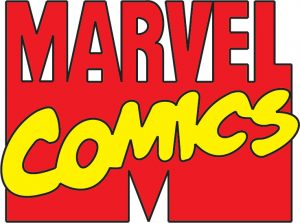
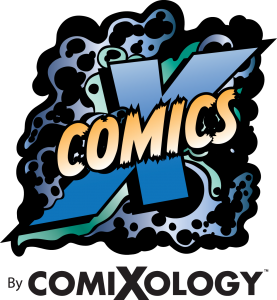
 Posted in
Posted in  Tags:
Tags: 